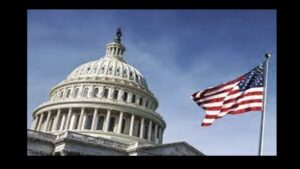Table of Contents
INTRODUCTION
On October 1, large parts of the US government could temporarily shut down, if the US Congress fails to approve spending bills due to a dispute between lawmakers and far-right and right-leaning Republicans within the Republican Party.
Why Will the US Government Shut Down?
The US Congress has to allocate funding to 438 government agencies each fiscal year. The fiscal year ends on September 30 and, if the bills are not passed before the start of the new fiscal year, then those agencies will stop operating normally.
At least 20 shutdowns have been reported since the 1970s, and citing the Congressional Research Service. The last shutdown was during the Trump administration between December 2018 and January 2019, lasting 35 days, due to a dispute over border security.
Lawmakers often temporarily push that deadline back by extending agencies’ current funding levels in a “continuing resolution” so they can continue negotiating.

How Does it Impact Everyone in the US?
A shutdown means at least hundreds of thousands of federal workers would be discharged without pay. Services like passport applications to trash pickup at national parks will be disrupted if there is a shutdown.
Essential workers would remain on the job but they would not get. Services like mail delivery, tax collection and US debt payments would continue.
Shutdowns do not have any or little practical impact if they occur over a weekend, but the American economy would suffer if federal employees begin missing paychecks after two weeks.
This will also impact the US GDP growth by around 0.15 percentage points for each week it lasts, according to banker Goldman Sachs. The fall would be recuperated by a rise in the same amount once the shutdown was resolved. The Congressional Budget Office says the 2018-2019 shutdown cost the economy about $3 billion, equal to 0.02% of GDP of the US.
What Functions are considered Essentials ?
Each department and agency has a contingency plan to determine which employees must keep working without pay.
The 2018-2019 shutdown furloughed roughly 800,000 of the federal government’s 2.2 million employees. The White House budget office did not say how many would be affected in total this time.
The Department of Homeland Security said it would keep 227,000 of its 253,000 workers on the job, including border security agents and the Coast Guard.
The Department of Justice said in its 2021 contingency plan that 85% of its 116,000 employees would be considered essential, including prison staff and prosecutors. Criminal litigation would continue, although most civil litigation cases would be paused.
Air travel would remain relatively unimpeded, but in previous shutdowns, the Transportation Security Administration has warned that airport security screeners could call in sick at an increased rate.
It is not clear whether the United States’ 63 national parks will remain open. During a shutdown in 2013, the Obama administration shuttered parks due in part to safety concerns, losing an estimated $500 million. In the 2018-19 shutdown, the Trump administration kept them open with public restrooms and information desks closed and waste disposal halted. Some states, such as New York and Utah, paid for their sites to stay open and staffed during the 2018-2019 shutdown.
The Internal Revenue Service has furloughed up to 90% of its staff in the past but 100% of its employees are considered essential under its current contingency plan.
All military personnel would remain working, but roughly 429,000 civilian Pentagon employees would be furloughed
A shutdown happens when the U.S. government has not had more money allocated to its budget by Congress.
A debt limit is a cap set by Congress on how much money the U.S. government can borrow, which needs to be periodically raised.
